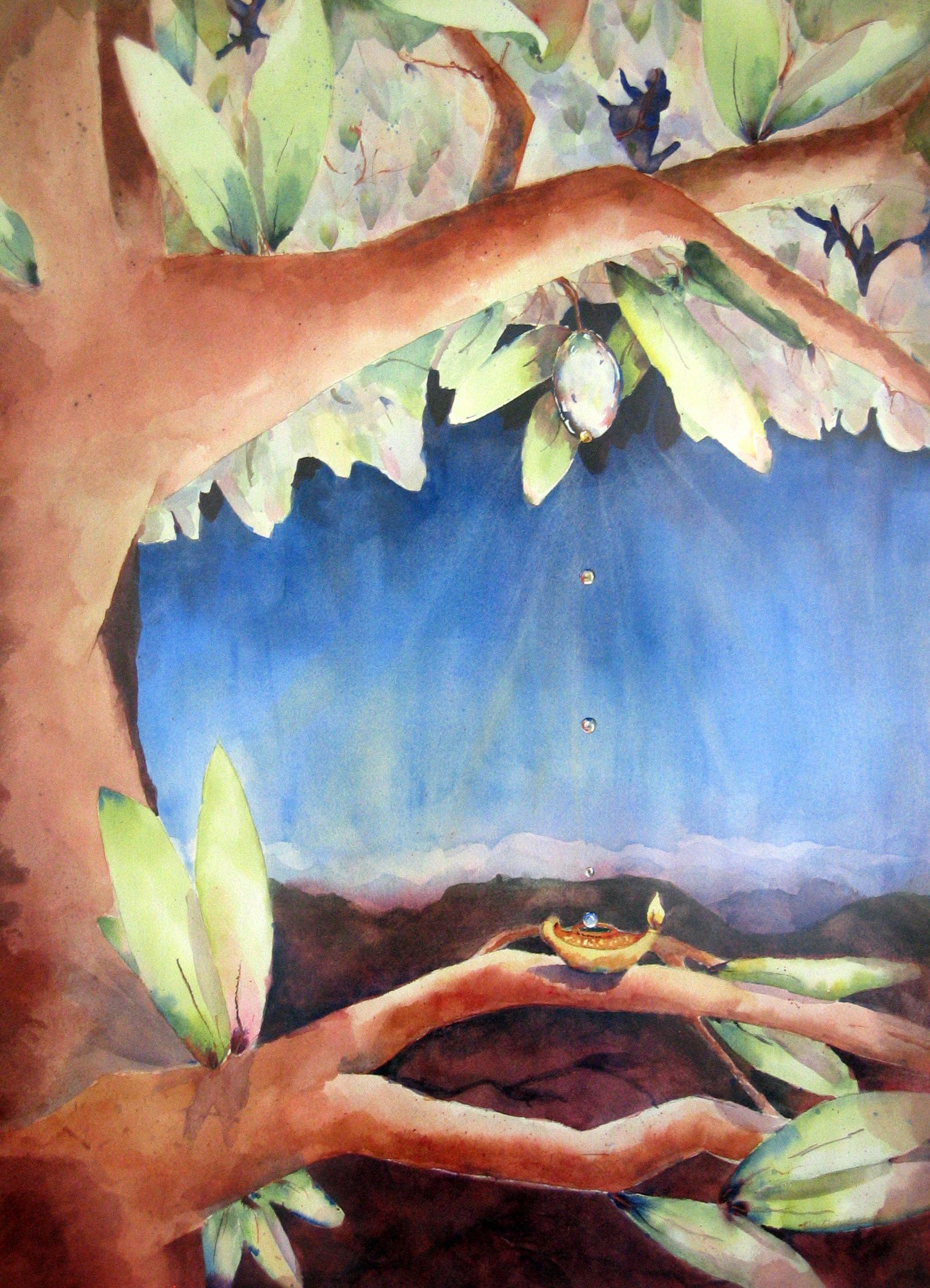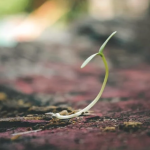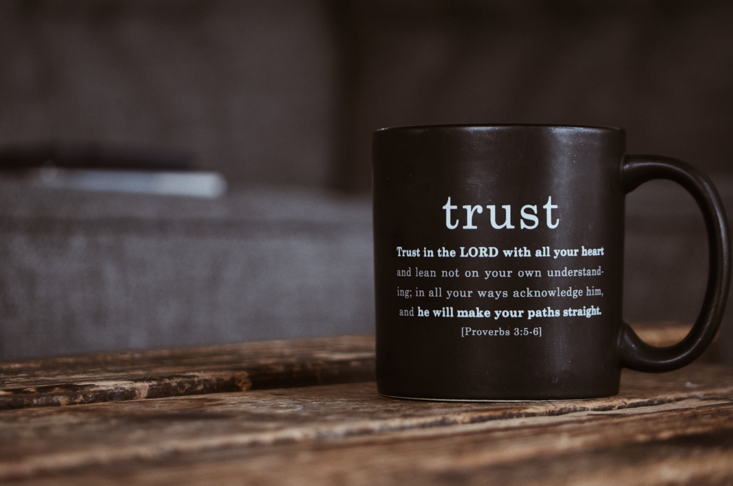~by Michelle
The shock was evident — both on her face, and in her voice — as she hung up the phone.
“Sister F. just died,” my friend said.
My friend was Sister F.’s visiting teacher, and the Relief Society President had just called to share the news. (Visiting teachers are often among the first to be informed of things like this.)
And now I — who just happened to be in my friend’s home as her visiting teacher — was part of this poignant moment. We reflected on how fragile life is. (No one expected Sister F. to go; it was her husband whose health was failing.) I couldn’t help but think of my former visiting teaching companion who had sat by me month after month, sharing messages of faith and chatting on this same couch with our friend. This companion died a year and a half ago. I still miss her fiercely.
The following Sunday, our Relief Society President stood and tearfully held up a plant (pictured above). Her visiting teacher had given her the plant when she was first called to be our Relief Society President, as a show of support at an overwhelming time. (Every local congregation has a Relief Society President, who has a great deal of responsibility, caring for the temporal and spiritual welfare of all the women in their congregations.)
Guess who was the visiting teacher who showed such loving support?
It was Sister F.
As our Relief Society President talked tenderly of Sister F. and the love she had shown, I couldn’t help but reflect on how women in The Church of Jesus Christ of Latter-day Saints are often present to help and support each other at the crossroads of life. It’s not unusual for visiting teachers and/or other Mormon women in Relief Society to bring meals in when a woman has a baby. Mormon women are there to help families plan funerals when loved ones pass, and they help prepare and serve the traditional family meal after a funeral. (I’ll never forget the impact such service had on me after my grandma died.)
As with Sister F. giving our Relief Society President the plant at a time of transition in her life, visiting teachers work to be aware of the lives of the sisters they serve and try to offer help and support and encouragement.
I have several recent examples from my own life of the way Relief Society sisters seek to serve. I was sick for much of the summer, and I’m facing a surgery here in a few weeks. Through this time, I have received meals and phone calls and emails. Because of my health, I’m unable to attend my ward (mornings are very difficult, so I attend a ward in the afternoon). I’m not sure if that is the reason why (I miss being with my ward family!), but for my birthday, a woman in the ward — I’m not sure who — invited sisters to send email messages of love. I received around two dozen email messages. (And I still have a raincheck for a lunch date with my visiting teachers once I get an appetite back!) Another friend has done so many little things here and there that I feel forever in her debt.
And I could go on.
Sometimes we as Mormons joke about the casseroles and jell-o that are often passed around as Mormon women serve. (Elder Holland, one of our apostles, quipped about this recently, too). To be sure, these things are part of Mormon culture that have come to have some comical quality for us and others.
But, I share Elder Holland’s thoughts:
Smile, if you will, about our traditions, but somehow the too-often unheralded women in this church are always there when hands hang down and knees are feeble. 1 They seem to grasp instinctively the divinity in Christ’s declaration: “Inasmuch as ye have done it unto one of the least of these … , ye have done it unto me.”
At another time, I want to talk about the way that Mormon men have used their priesthood service to bless the lives of others, so this notion of help and kindness is certainly not limited to Mormon women.
But I’ll always remember the quiet yet powerful thoughts that came to me as the Relief Society President held up that plant. I think it very significant that Mormon women make it a point to be at significant crossroads of life, particularly those that have deep doctrinal meaning for us as Latter-day Saints. As we support each other as new life enters the world, and seek to mourn with those who mourn the loss of someone who has left the world, I believe we are doing the Lord’s work. I believe it’s about a lot more than casseroles and jell-o.
I also believe that as we seek to be there at other moments in each others’ lives, I think we can sense — and share — the kind of love Heavenly Father and the Savior, Jesus Christ, have for us. And our hearts can be knit together more.
I’m grateful to be a part of a church that encourages this kind of watchcare. I know we as Mormons don’t have the corner on what it means to serve and care for others, and I know we could often do better, but I do think the home and visiting teaching programs are pretty amazing at the core. I’m not sure we who are Latter-day Saints always realize what an impact it can all have.
Reflecting on this makes me want to be a better visiting teacher. It also makes me want to be a better neighbor and friend to others who may not be part of my faith. We all need to know people care.
What have others done to help you in times of need? How could others better help you in your needs? If you are Mormon, what has the home/visiting teaching program meant to you?















Michelle,
Thank you so much for sharing this inspired message. Over the past ten years I have gained such an appreciation for the love and support that I have been given through ward members, friends, neighbors, and even sweet young women.
These wonderful individuals have been by my side offering to me their service, friendship and love, during the time when I was going through a diagnosis with a chronic kidney disease. They were there as I went into early labor with my fourth child and was put on bed rest. They were there when I was serving in our ward relief society presidency and I fought a difficult battle with severe depression and anxiety. I came through that experience much more richly blessed for the kindness and service of so many good ladies in my ward, even though I at that time, was serving as their leader.
I also have been blessed by sweet teenage girls, whom I currently work with, who serve as a light in my life as I continue to recover from depression.
You too Michelle, have been a blessing to me through your example, kindness, and words of encouragement. I pray that you will find continued blessings in your life and you strive to work through your health challenges. My prayers are with you!
I wanted to share this example, but didn’t want to take the time to type it! Luckily I found an old doc from 2004, that had the first part of this story already told. I’ll update as necessary —
I didn’t always have a testimony of Visiting Teaching; in fact, in college I missed sometimes – probably more often than not. I figured if I tried calling and couldn’t get the sister, hey, at least I tried!
I was most likely to do my Visiting Teaching the months the presidency offered to give us an ice cream party if we got 100% Visiting Teaching or if we beat the other Relief Society in the dorm with visits.
I remember it being really awkward going visiting teaching because I didn’t know what to talk about and I was intimidated by the better-looking and more popular girls I visited. I had to learn over time the gift of gab. I had to learn how to have a true interest in the sister I was visiting. When I had that true interest, it became easy to ask about school, work, and family. I had to learn to reach outside my self and stop thinking about why don’t they talk to me.
My testimony of visiting teaching began to really grow when I was a newly-wed living in Salt Lake. Each month I always received some sort of contact. If my Visiting Teachers did not come, I got a call from the Visiting Teaching supervisor or a member of the Relief Society Presidency. This showed me how important this work must be!
A few years later, in our first home, I was assigned to a sister who I really connected with. It was as though she really were the big sister I never had. She was two years older than me, our birthdays were in the same month, her husband’s and her name both started with the same letter like us, she worked a the Church Office Building for a while, where I worked, she lived downtown when she was first married like me, neither of us had children yet, but wanted them, and on and on.
Sometimes I wasn’t able to visit my friend, so I would call her and we would talk for an hour or so. We loved talking with one another.
One day I received a call from the Relief Society president, and she said my friend was in a battered-women’s shelter and had wanted the president to tell me. What in the world?! I thought. How could that be? Everything seemed fine with her. She never indicated that she had any marital problems. I felt awful that I hadn’t been able to see the signs and help her.
Even after she left her husband and over a year later got a divorce, I am still in contact with her (even 7 years after writing this). The friendship we developed because of Visiting Teaching still goes on!
She told me that I was the closest friend she had while she lived here. I was so glad I was obedient and did my Visiting Teaching, then gained a friend and a testimony of Visiting Teaching. Could you imagine how more alone she would have felt if no one had made contact with her?
(Addition) Even sometime later she called to tell me she was speaking on Visiting Teaching and wanted to use me (!) as an example of a good Visiting Teacher. It was because of my Visiting Teaching that she remained in the Church through that difficult time in her life. I was so grateful that I had fulfilled my responsibility because it would have been quite likely that she would have left the Church had it not been for my mere efforts.
Ariane,
Thank you for taking the time to share some of your own experiences. Reading your comment reminds me about life is just hard for a lot of us — how much we need others! Thank you also for your strength and faith, which have been a blessing to me. I am grateful how my circle of friends has expanded through the internet!
Emily, thank you for sharing some of your journey with visiting teaching. I think you have captured how it can be a process. And how we often may not know how the little things, the little efforts, can make a big difference in others’ lives.
I’ve been reflecting on how many friendships were really formed through visiting teaching as well….
I struggle with visiting teaching… both going out, and receiving visits. Still working my way through. I love so many things about it, and really enjoy being one of the “Church Ladies” who do help with those new baby meals, and funeral suppers, and random acts of service that add so much to life. So, it’s a worthwhile struggle… but for some (hermits like me), it really is a struggle.
Good article, good comments above mine!
Liz, I sometimes struggle with it, too, so that’s part of why reflecting on the blessings has been good for me. I think sometimes in the regularity of it all, we can easily lose sight of the significance that can happen as we build relationships and have a network in place to step in and help when help is needed — and to, we hope, seek to be aware of needs along the way.
My visiting teacher recently asked me, very pointedly, what she could do to help me in my life. At that point I didn’t want to fake it anymore and told her of a deep struggle I have been dealing with for a few years. Her love and support have meant everything to me! She has brought me inspiration and peace in a time of spiritual turmoil. I am grateful for her example.
I strive to do my visiting teaching every month because I know it is the Savior’s will but now I will do it with more sincerity and prayer because I have been so blessed through her efforts and example.
I’ll always remember the christmas eve we had a baby, it wasn;t my visiting teacher..I hadn’ seen one in months. It was the sister I visit taught who cared for my children and brought us a meal. She was my closest friend when I really needed one, In all of my visits I had never expected her to return the favor…but I’m so grateful she did,
Erin, I love your comment and I think you have highlighted something that is an important part of visiting teaching — we have to help our visiting teachers know how to help us. By opening up in this way, you have allowed her to help you and I’m sure it has meant a lot to her. I think most people would want to help us if they knew what we really need. Thank you for sharing this (and I pray that you will be blessed with peace and comfort and insight with your struggles!)
Britt, what a lovely example of how the relationships we build can go “both ways.” This touched my heart.
~Michelle
Years ago when my oldest son was 4, we moved to a new ward. We attended church the first week, and the second Sunday my husband had to take our only car to travel to a military assignment. I wasn’t too eager to go to church with two little kids and when I didn’t know anyone. My son kept asking “When are we going to church? How are we getting to church?” and I kept brushing him off. Finally I told him we didn’t have a car so couldn’t get to church. He said, “Well, you have visiting teachers, don’t you? Why don’t you call them?”
A sadder but wiser and humbler young mother didn’t have visiting teachers, but she did have the RS President’s phone number. I called her, and she came to pick us up for church. All because of a little boy’s testimony of the visiting teaching program.
Cathy,
That is about the sweetest story I have ever heard. From the mouth of babes….
Thank you so much for sharing that. What a wonderful way to start my day.
~Michelle